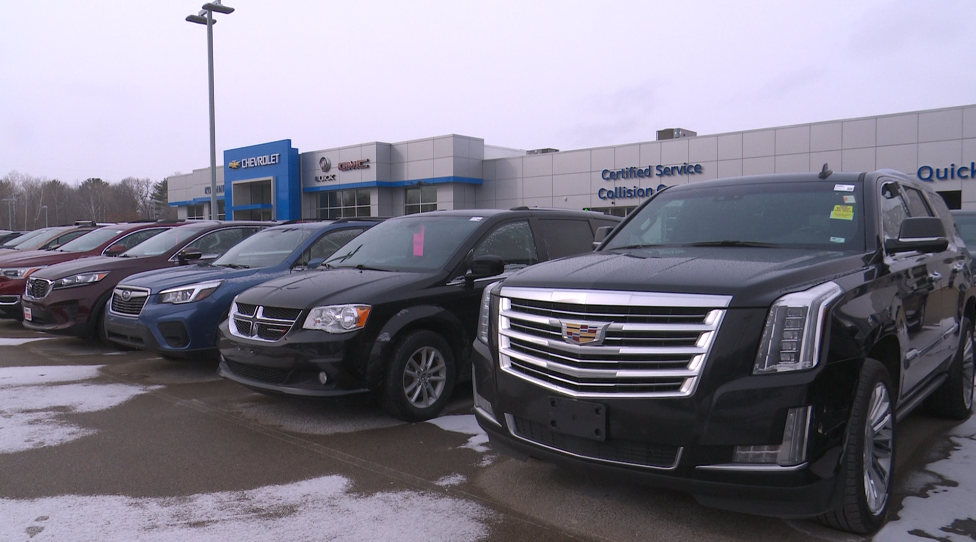MARINETTE (NBC 26) — Record setting inflation across the nation is driving new and used car prices through the roof, but there are still ways you can get good deals.
At a time when empty car lots became the new "normal," Joseph Scala, Appleton, found himself in need of a new car when his fuel pump went out.
“It’s a very, very different experience," Scala said. “You’re picking from a pool of 50, when before you were picking from a pool of hundreds.”

A family friend in the car business helped Scala purchase a used Jeep at an area dealership. Although there were fewer choices and higher prices, Scala was happy with his car buying experience and feels lucky he bought when he did.
“I was fortunate, because obviously with a lot of the market conditions and inflation, the prices have come up considerably in recent times," Scala said.
According to the latest Consumer Price Index, used car and truck prices went up 37% in December from a year earlier. That means a used car priced at $28,000 would be over $10,000 more than last year. The CPI reports new car prices increased nearly 12% during the same time period.
- The future of the microchip shortage is still unclear
- How a recent car shortage is affecting local dealerships
“There is a huge demand and the supply is not out there," said Bill Sepic, Wisconsin Automobile and Truck Dealers Association president.
Sepic said the microchip shortage for new vehicles means less product on car lots, helping to drive up the price of both new and used vehicles.
“I think those rates are going to stay high for a good part of 2022 and certainly the new car prices are going to stay high as well," Sepic said. "I think consumers and dealers should both plan for a year that’s going to be challenging.”
The supply of new cars is slowly improving at Koehne Chevrolet Buick GMC in Marinette. Chad Koehne, owner of the dealership, said they have 25 new vehicles to sell this month.
“This is our biggest month in probably about a year," Koehne said. "Most of the year last year we started out with less than five cars on the lot at one time for new.”
Koehne's has 300 vehicles on the lot, 90% of which are used. Koehne said it's the used vehicles that are driving sales right now.
“We believe that you have to buy and sell in today’s market. So we also make sure that we have enough vehicles on our lot," Koehne said. "People still need vehicles, even though we’re in the middle of a pandemic that is having a shortage on product. So we keep our lot fully supplied and I think that helped out with all of our purchases.”

The dealership continues to do a lot of order outs. Koehne said the new cars that do hit the lot are usually turned and sold within a week.
Like other car dealerships nationwide, Koehne's is experiencing different supply chain issues when ordering new vehicles for customers. Although we often hear about microchips, Koehne said features like heated seats, heated steering wheels, after market wheels and bed liners for pickup trucks are difficult to come by.
“It’s got to be a supply chain issue down the road that they can’t supply that," Koehne said.
New car market pricing went up about 20%, partially because the cost to build and ship vehicles has also increased. The price hike in production costs is causing car manufacturers to offer fewer rebates.
But there is good news for consumers right now: People can potentially get more for their trade. Koehne said drivers can sometimes get 10-15% more, depending on the type of vehicle. He said larger pickups and SUVs are just a few examples where people can get more bang for their buck.
“You might even be getting a better deal than you were before, because the vehicle you’re driving might be in more demand," Koehne said. “You could be getting a better deal on the new vehicle, because of the value on your used one.”

Leasing a vehicle can be another way to save.
“Now your payment can stay the same. You can still drive a brand new vehicle. It also helps out once you have equity in your used vehicle and you trade it in that can even bring down your payment even more," Koehne said.
The National Automobile Dealers Association reports inventory levels at the end of December totaled 1.1 million units. That number is down almost 60% from the same time in 2020. While microchip shortages are starting to improve, The NADA predicts shortages will last for at least a quarter of 2022.



